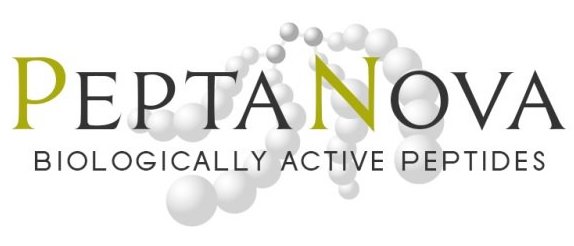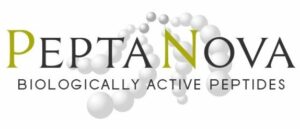Apelin-36 (Human)
4362-s 0.1 mg | 145.00 EUR
Leu-Val-Gln-Pro-Arg-Gly-Ser-Arg-Asn-Gly-Pro-Gly-Pro-Trp-Gln-Gly-Gly-Arg-Arg-Lys-Phe-Arg-Arg-Gln-Arg-Pro-Arg-Leu-Ser-His-Lys-Gly-Pro-Met-Pro-Phe
| (M.W. 4195.8) | C184H297N69O43S | [252642-12-9] |
Synthetic Product
The purity of Apelin-36 (Human) is guaranteed to be higher than 99% by HPLC
Ligand for APJ Receptor
Novel peptide found using an orphan receptor APJ
The G-protein coupled receptors control various physiological functions. These receptors have seven-transmembrane-domain (7TM) receptors. Recently, many cDNA sequences of 7TM receptors with known ligand, have been reported. However, some 7TM receptors have unknown endogenous ligand and are called orphan receptors. Using orphan 7TM receptors as the new tools to search for novel peptide ligands, nociceptin [Nature, 377, 532 (1995)] / orphanin FQ [Science, 270, 792 (1995)], orexin [Cell, 92, 573 (1998)], and prolactin-releasing peptide [Nature, 393, 272 (1998)] have been identified.
APJ is an orphan 7TM receptor and encoding gene is located on human chromosome 11. The transcripts for this gene are detected in many regions of the brain and resemble the angiotensin receptor (AT1), ranging from 40-50% in 7TM regions [Gene, 136, 355 (1993)]. However, angiotensin II does not bind to the APJ receptor. The APJ mRNA is expressed not only in the central nervous system (CNS) but also in phytohemagglutinin- and IL-2- activated peripheral blood mononuclear cells. In the immune system, the APJ receptor is reported to support the entry of HIV-1 as a coreceptor with CD4 [J. Virol., 72, 6113 (1998)]. Therefore, the ligand for the APJ receptor is believed to have CNS functions and plays a role in immune response and HIV infection.
CHO cells expressing the APJ receptor and a cytosensor for measuring extracellular acidification rate were used to identify an endogenous ligand for the APJ receptor. The activity was found in extracts of bovine brain, intestine and stomach tissues, and a peptidic ligand was isolated from stomach extracts in which the highest activity was obtained. Subsequently, the primary structure of the newly discovered ligand designated apelin was determined by cDNA cloning [Biochem. Biophys. Res. Commun., 251, 471 (1998)]. The isolated bovine peptide corresponded to the carboxyl-terminal part of the 77-amino acid prepropeptide (apelin-36). Human apelin-36 sequence was also determined by the same method and it differs in only two amino acid residues from the bovine peptide. Interestingly, the acidification rate promoting activity of synthetic [Pyr1]-Apelin-13 (the carboxyl-terminal 13 amino acid residue peptide with Pyr at the amino terminus) was found to be much higher than that of parental apelin-36 (EC50= 0.30 nM vs. 20 nM). The hitherto unknown endogenous functions of apelin could be elucidated using synthetic apelin-36 and [Pyr1]-apelin-13.
References:
- K. Tatemoto, M. Hosoya, Y. Habata, R. Fujii, T. Takegawa, M.-X. Zou, Y. Kawamata, S. Fukusumi, S. Hinuma, C. Kitada, T. Kurokawa, H. Onda and M. Fujino, Biochem. Biophys. Res. Commun., 251, 471 (1998) (Original; Human and Bovine)
- M.X. Zou, H.Y. Liu, Y. Haraguchi, Y. Soda, K. Tatemoto and H. Hoshido, FEBS Lett., 473, 15 (2000) (Pharmacology of Apelin-36)
- M. Hosoya, Y. Kawamata, S. Fukusumi, R. Fujii, Y. Habata, S. Hinuma, C. Kitada, S. Honda, T. Kurukawa, H. Onda, O. Nishimura and M. Fujino, J. Biol. Chem., 275, 21061 (2000) (Pharmacol.)
- N. DeMota, A.R. Goazigo, S.E. Messari, N. Chartrel, D. Roesch, C. Dujardin, C. Kordon, H. Vaudry, F. Moos and C. Llorens-Cortes, Proc. Natl. Acad. Sci. USA, 101, 10464 (2004)
(Endogenous Apelin in Rat)
Apelin-36 (human) is distributed through Peptide Institute, Inc. under the license of Takeda Pharmaceutical Company, Ltd.

